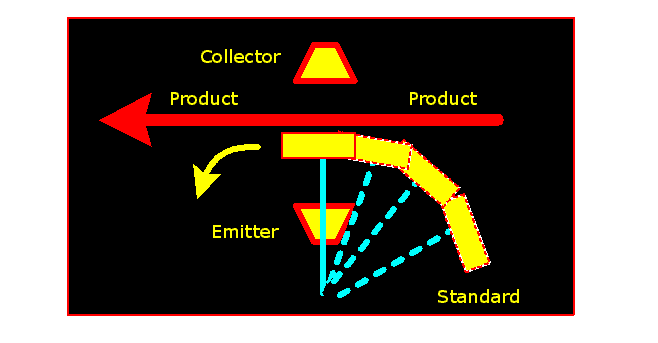Andrew Evenson
Member
Hi all,
Iv'e got a question, I hope I can describe clearly, and I hope someone can help me in determining a solution. Ok here goes..
Im currently migrating an old piece of equipment into a plc. It's an old analog electronic thickness gauge. We are migrating it into the plc for reliability . The heart of the system is an isotope source which bombards the material being measured. There is a detector which measures the radiation that was not absorbed into the material. This detector outputs to an amplifier with VERY high gain. OK, hope this makes sense. Now, I take this analog input into the PLC into a 16 bit A/D input card. From this, the input is scaled and used to determine the thickness of the material.
One of the sequence that is preformed with this gauge is to standardize the guage. This takes into consideration any shifts in the zero and top parts of the measuring range, due to dirt buid up on the detector and applies a compensation to the measuring algorithm. During this process, I take "X" samples at the bottom and top ends of the range. Now, since this high gain amplifier is an analog device, it is suseptable to drift. This is where my question comes in...
Im looking to detect the amount of noise/variations in the samples taken to dertermine the drift of the amplifier, and ultimatly system degredation, and which way it is drifting for predictive maintaince purposes. If the amplifier drifts too much, it throws a shift in our product, and the product is unshippable due to being out of thickness tolerences. I want to send an alarm to the HMi to say that the drift is reaching its limits, and so to change the amplifier.
Now, the plc im using has a Standard deviation instruction. I think, although im no expert in SPC, this will help me dertemine variations between the samples taken. If so, how may do I track which way its trending?? Do I just use compare instructions to dertermine the direction or trend and alarm off of these comparisions??
If im out in left field, please tell me, and I would appreicate any idea's or critisism.
Thanks,
Andrew Evenson
Iv'e got a question, I hope I can describe clearly, and I hope someone can help me in determining a solution. Ok here goes..
Im currently migrating an old piece of equipment into a plc. It's an old analog electronic thickness gauge. We are migrating it into the plc for reliability . The heart of the system is an isotope source which bombards the material being measured. There is a detector which measures the radiation that was not absorbed into the material. This detector outputs to an amplifier with VERY high gain. OK, hope this makes sense. Now, I take this analog input into the PLC into a 16 bit A/D input card. From this, the input is scaled and used to determine the thickness of the material.
One of the sequence that is preformed with this gauge is to standardize the guage. This takes into consideration any shifts in the zero and top parts of the measuring range, due to dirt buid up on the detector and applies a compensation to the measuring algorithm. During this process, I take "X" samples at the bottom and top ends of the range. Now, since this high gain amplifier is an analog device, it is suseptable to drift. This is where my question comes in...
Im looking to detect the amount of noise/variations in the samples taken to dertermine the drift of the amplifier, and ultimatly system degredation, and which way it is drifting for predictive maintaince purposes. If the amplifier drifts too much, it throws a shift in our product, and the product is unshippable due to being out of thickness tolerences. I want to send an alarm to the HMi to say that the drift is reaching its limits, and so to change the amplifier.
Now, the plc im using has a Standard deviation instruction. I think, although im no expert in SPC, this will help me dertemine variations between the samples taken. If so, how may do I track which way its trending?? Do I just use compare instructions to dertermine the direction or trend and alarm off of these comparisions??
If im out in left field, please tell me, and I would appreicate any idea's or critisism.
Thanks,
Andrew Evenson






